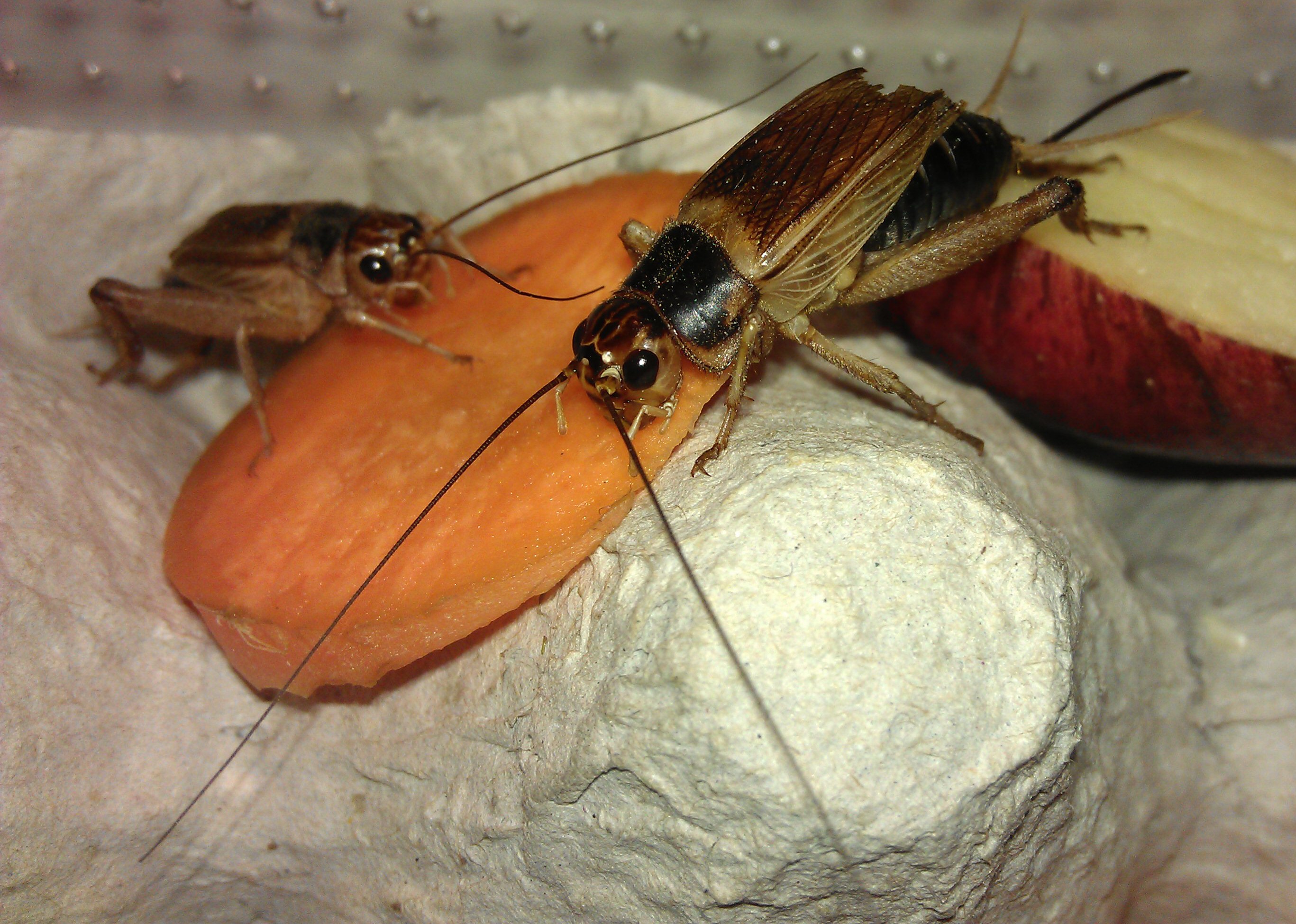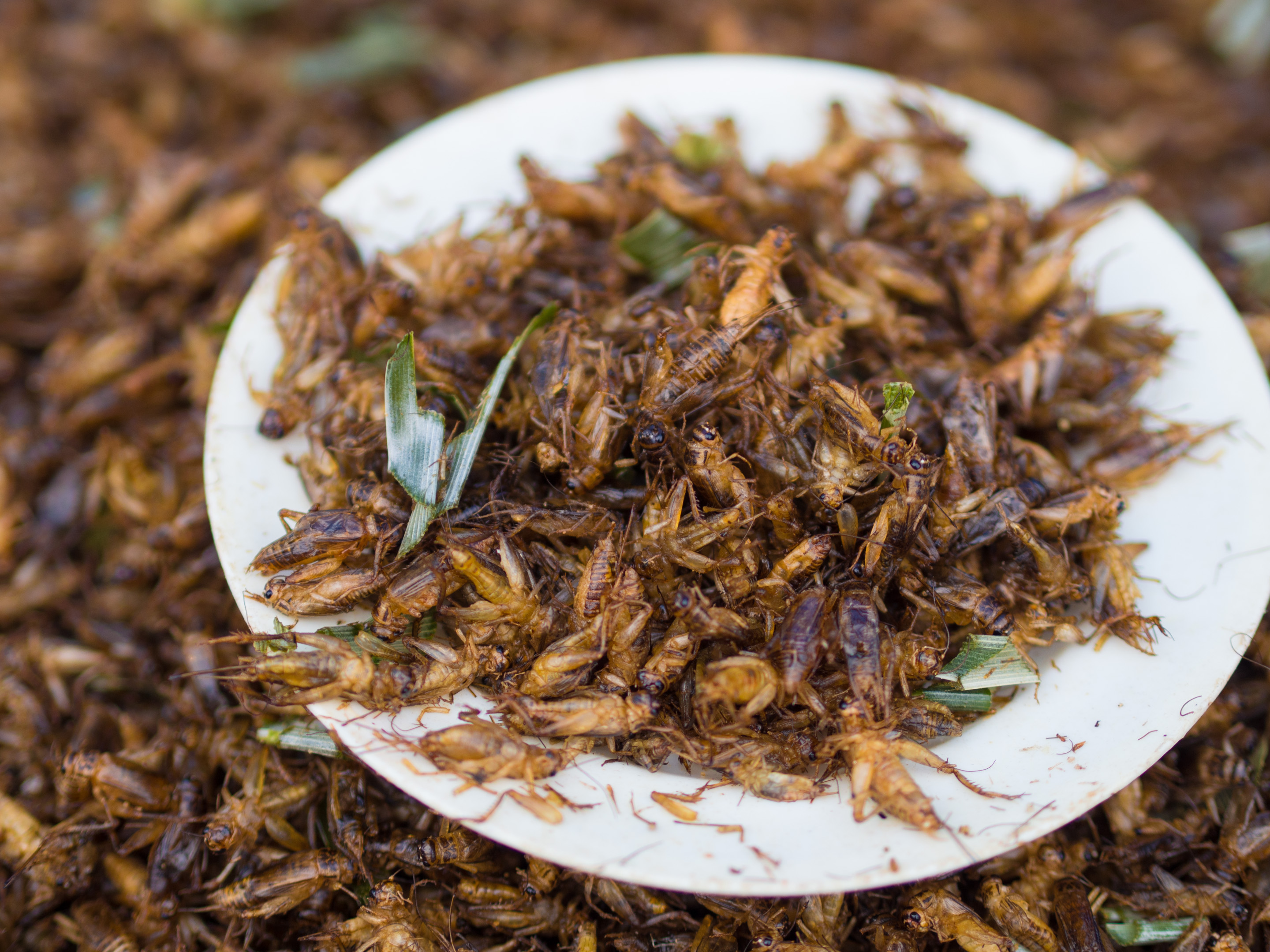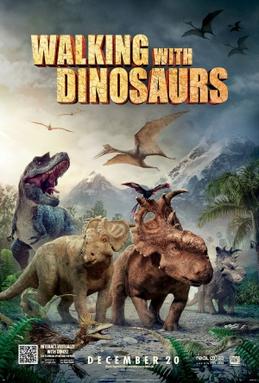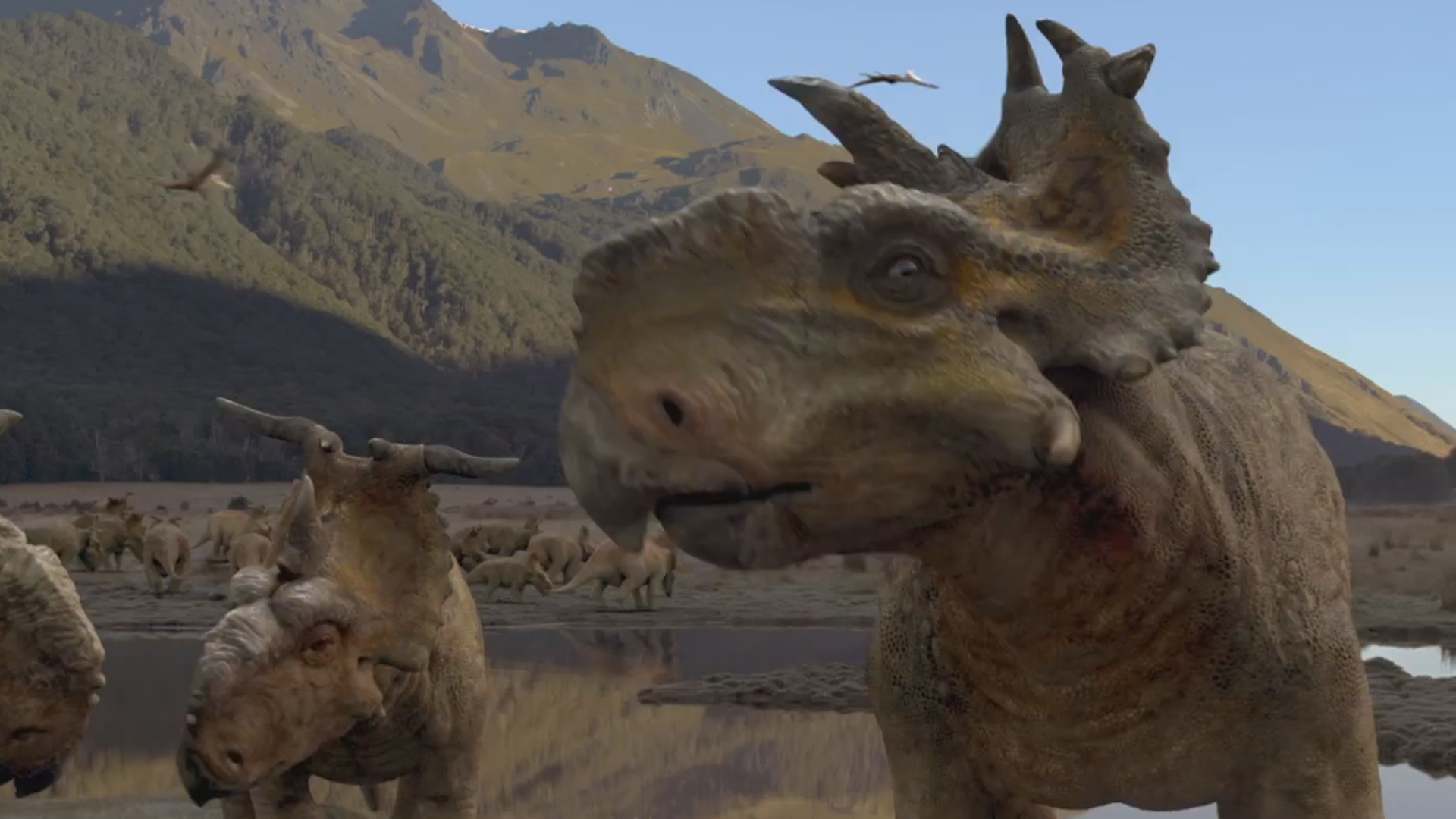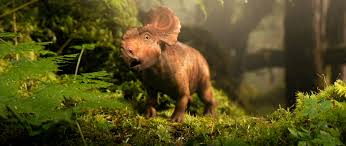This
week, I hope you readers aren't getting tired of dinosaurs, because
we're going full-fledge dino this week! Everything from the In the
Spotlight to the Topic
of the Week . . . well, the
Days Till section of
the article isn't devoted to dinosaurs, but everything else is. For
those readers who might not be as interested in dinosaurs as I am,
you've no need to fear, because we won't be doing a dinosaur-related
blog post next week. Anyway, let's get started!
Days Till
It is:
17 days till Father's Day
It is:
23 days till Summer Solstice
It is:
36 days till Independence Day
In the Spotlight
For
those of you who have been keeping up with reading these blog posts,
you'll know that there's a lot going on concerning the upcoming film
Jurassic World, that is
filming at this very moment. I'm very excited for the film. However,
in all the hullabaloo, many people have leaked “spoilers” onto
the internet (they're not really spoilers, per se, but if you don't
want to know anything about the film, skip to the Topic
of the Week). One of the
most major contributors to the spoilers leaking is Joblo.com,
and they started a rumor regarding the film's plot. You can read
about it here.
These
rumors seemed like they were accurate, but we could never be 100%
sure and we had to take this news with a grain of salt. When learning
or hearing about rumors concerning upcoming films, it's always a good
idea to take them with a grain of salt, because some are nothing more than tales spun up by people on the internet desperatefor attention. Just
yesterday, the result from an exclusive review with the film's
director, Colin Trevorrow puts a lot of conspiracies to rest and
reveals why the film has been shrouded in secrecy. As the interview is far too extensive to put in this blog post, you can read the
whole interview here and here.
Now
we know for a fact
that the new film will take place at a new theme park on Isla Nublar,
the island of the first film. The interview you just read also
corrected many misconceptions about Jurassic World.
One of the ones I found most interesting was that many fans of the
Jurassic Park
franchise believed Velociraptors
would be tamed in the film by Chris Pratt's character – named Owen,
based on what was said by Joblo.
Trevorrow corrected that myth and said that Owen is merely studying
their behavior. He also debunked the myth that there would be “good”
and “bad” dinosaurs. Yahoo!
 |
| Chris Pratt's character will be studying Velociraptor behavior in Jurassic World; let's hope he fares better than Dr. Alan Grant does in Jurassic Park III as seen above. |
In
other Jurassic World
news, a series of photographs was recently leaked onto the internet
from an unknown source.
They reveal what the new park might look like. Here are the
photographs below:
Of
course, since many of them are either blurry or don't show the whole
map, we can't be certain about everything the park will have to offer
– if this isn't some
hoax spun up by some guy on the internet – but from what we can
see, we can start to learn about what species of dinosaurs and other
creatures will be in the park:
- Tyrannosaurus
- Triceratops
- Gallimimus
- Pachycephalosaurus
- Flying reptiles that live in Aviary (possibly Pteranodon)
- Mosasaurus
Velociraptors
and Diabolus rex
are apparently missing from the map, suggesting either that these two
dinosaurs aren't showcased to the public (we can see that the map is
one for tourists because it says “Welcome to Jurassic
World” and “You are here”)
or that this map is a hoax. I'm also rather skeptical about this map
because there is an apparent lack of enclosures for sauropods, such
as Brachiosaurus,
which appeared in the first and third Jurassic Park
film, and hadrosaurs like Parasaurolophus,
which appeared in all three films released so far. It seems kind of
strange to me that this movie would emit sauropods and hadrosaurs
from the film, considering how iconic they are to the series. But
like I said, much of the map is hard to see, so we can't say for sure
if they are or aren't there, or even if this map is really for the
film and not a hoax.
Last
but not least, Trevorrow posted an image of the badge worn on the
hats of Jurassic World
veterinarians:
With
all the news coming in about Jurassic World,
a JP fan like me can't
help but be excited.
Topic of the Week by
Christian Ryan
I
recently got a documentary on dinosaurs called Dinotasia . . .
and I loved it! For those of you not familiar with it, it is a
dinosaur-starring documentary by Creative Pictures and
Discovery Channel and narrated by Werner Herzog. But
it's quite unlike any other dinosaur documentary I can think of, as
it not only portrays the latest dinosaur fossil discoveries, but also
classic storytelling techniques generally unseen since the era of
silent films. This film is almost as if you took the BBC
series Walking
with Dinosaurs and the
Disney
film Fantasia
and blended the two together. Just like Fantasia,
there is slapstick humor, and moments that will make you cry; like
Walking with Dinosaurs,
it's based on real fossil evidence. That's what I feel makes
Dinotasia so unique. Today, as Werner says near the film's
beginning, “We've now returned to a world where life and death are
locked in a merciless struggle.” Welcome to Dinotasia.
P.S.: Don't watch if your squeamish. This film is not
really for young viewers, as there are quite a few instances where
dinosaurs or other animals get eaten, violently killed, injured,
stabbed, stepped on, beheaded and . . . you get the picture!
Before I
get any further into my review about Dinotasia, you might want
to know some background on the film. Back in September of 2011,
Discovery Channel released one of my favorite dinosaur
documentaries (or dino-docs) called Dinosaur Revolution (it
was originally going to be called Reign of the Dinosaurs), a
four-episode series that takes the viewer back in time to see what
the latest fossil discoveries have to saw about these amazing
creatures. Unlike most other dino-docs, it combined enriching
storytelling with loads of scientific facts, often given by
“talking-heads”. There were four episodes:
Evolution's Winners (I wouldn't have picked that title for the
episode, of course), which is about why dinosaurs were unique among
other creatures. Watering Hole tells the story of an
Allosaurus as he struggles to survive in the harsh Jurassic
world. Survival Tactics was all about, as the title suggests,
the dinosaurs' various survival strategies. The fourth and final
episode was End Game; this episode focused largely on a pair
of Tyrannosaurus rex and dinosaur extinction.
Unfortunately,
while the series received lots of praise, it also received lots of
negative comments. Many viewers mainly complained about the quality
of the special effects, the annoying narrator (originally, it was
supposed to have no narration), and the constant switches from
serious to not-so-serious. Frankly, I don't know what there was to
complain about. I LOVED the series. My main complains with Dinosaur
Revolution, along with Dinotasia, is the use of the
secular worldview of evolution and millions of years, of course. But
seriously, other than that, I didn't get why a lot of people
complained. After the series aired, it's creators decided to make
sort of a director's cut of the series; they combined what they
considered the best scenes from the series, used a new narrator,
Werner Herzog and meshed them together to make Dinotasia.
Dinotasia
takes the viewer on a ride back in time to when dinosaurs roamed the
planet. As with the Walking with Dinosaurs: The Movie
review I did, I want to take a moment and say when the scenes in the
film take place, as the earth really isn't millions of years old as
evolution teaches. Most of the scenes in Dinotasia
would fit perfectly in the pre-Flood world, perhaps around 4,500
years ago; that's the time before the global Flood of Noah's time
(which happened about 4,350 years ago) wiped the earth clean of all
recognizable geography and God cast His judgment on the world. The
only exception I feel would be the very first and last moments of the
film, but I'll get to that later.
Another
objection to the film I'd like to make is that many of the dinosaurs
are portrayed with feathers, something obviously inspired by the
belief that dinosaurs evolved into birds. There's a lot of evidence
against this belief; in fact, no dinosaurs to date have been discovered with feathers.
All “dinosaurs” that have been discovered with feathers (like Rahonavis) are actually birds that God created with some “reptilian features”.
As
mentioned before, there is a good bit of violence in Dinotasia,
but much of the violence isn't actually thought up by some creative
mind – a lot of it is based on real fossil discoveries! One
dinosaur discovery that backs up what is seen in Dinotasia
is of the broken jaw of an Allosaurus
that was broken during the time the animal was alive (more on this
later). Finds such as this are a problem for Christians who believe
that the Bible and evolution compliment each other. If that were the
case, then you'd have animal death, injury and violence, millions of
years before Adam sinned in the Garden of Eden, but that's not the
world that God said “that it was good” (Genesis 1:31). No, death
and injury of man and animals is a result of mankind's sin and
rebellion against God. Dinotasia
perfectly portrays the kind of violence that happened in the
pre-Flood world; Werner himself even says at one point in the film
that “Eden does not exist here.” How right he is!
 |
| A family of Eoraptors surveys the land in the first episode of Dinosaur Revolution. |
Over the
past few paragraphs, I've mentioned time and time again about the
scenes in the film. Well, I might as well not have said that if I
hadn't intended to tell you what scenes were in the film! So here
they are:
The Great Dying – a thrilling short scene in which a pair of Inostrancevia
try to escape the destruction of their world.
Rivals
– this story takes place in Jurassic Portugal (the environment, not
the fictitious time period) and portrays the rivalry between an
Allosaurus and his
prey, a Dinheirosaurus,
along with the other creatures that live around a small waterhole.
Timeless Sea
– A montage of different stories (taking place in the ocean, Utah,
Antarctica, Portugal and China) featuring a mother mosasaur giving
birth, a pack of Utahraptor
trying to bring down a Cedarosaurus,
a Glacialasaurus trying to find a mate, a pair of Cryolophosaurus
fighting over a mate, a cameo appearance from the creatures in Rivals
and a pair of Guanlong.
Sound of Survival
– a tiny Rahonavis
bird forms sort of a symbiotic relationship with a larger titanosaur
and tries to avoid getting stepped on or eaten by the carnivorous
Majungasaurus.
Forbidden Fruit
– a young Shunosaurus
learns a similar leason to the one Adam and Eve learned 6,000 years
ago . . . that disobeying has serious consequences.
Herd Instincts
– a baby Protoceratops
struggles to survive after the death of his herd at the hands
(claws?) of small but extremely underestimated Velociraptor!
Empty Nest
– a mother pterosaur
decides
that it is time for her young to learn the power of flight . . . but
it's a dangerous world for a new flier.
End Game
– a pair of Tyrannosaurus
named Tinkerbell and Stumpy find out how hard it is to raise a family
in Cretaceous Montana with the ominous threat of Jack the
Tyrannosaurus.
Also, a pair of Troodon
struggle to survive in a post-apocalyptic world.
While
watching Dinotasia,
it feels almost as if you can actually travel back in time to see
these amazing creatures. I enjoyed the experience greatly. On this
adventure, there are plenty of amazing and incredible creatures to
see. Now, let's look at some of the creatures that make up Dinotasia:
The Great Dying
Inostrancevia
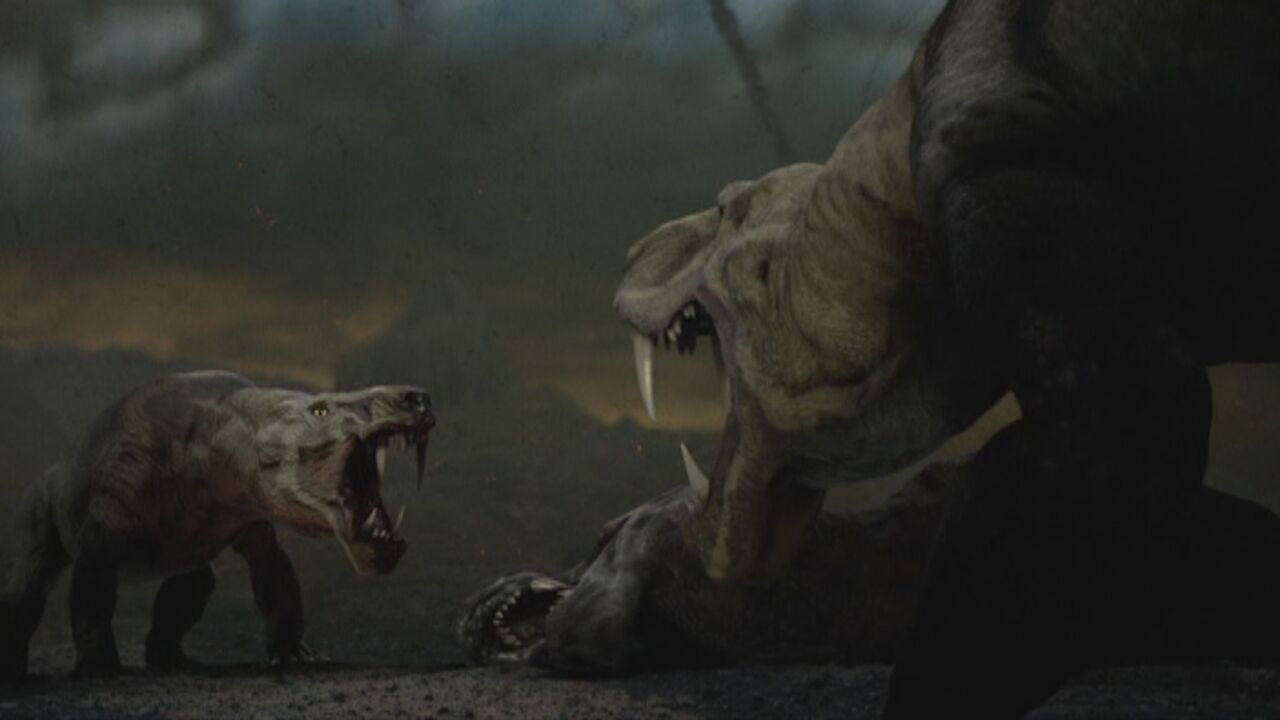 |
| A pair of Inostrancevia fight over a carcass. |
Inostrancevia
was the largest member of the gorgonopsid family. These ancient
reptiles were not dinosaurs, but another type of reptile called
therapsids. The gorgonopsids were ferocious predators that hunted
pretty much any other creature in their environment. In the habitat
they lived in, the only creature they had to fear was another
gorgonopsid. Gorgonopsids came in all shapes and sizes, but
Inostrancevia – the
largest – was the size of a rhinoceros! It bore four-inch
saber-teeth in its jaws used to finish off its prey. In the first
scene of Dinotasia, a
pair of gorgonopsids try to survive a nasty meteor shower.
Unfortunately, even if they survive, the world as they know it is
sadly coming to an end. This is probably not the world of the
pre-Flood. Instead, this scene in Dinotasia
seems to fit more of a post-Flood setting, when the world really was
quite apocalyptic and unpredictable.
Rivals
Allosaurus
 |
| Allosaurus was one of the top predators of Jurassic Portugal. |
Allosaurus
is what many have called the “Lion of the Jurassic”, and rightly
so. It was one of the top predators of the Jurassic environment. It
was about 10 feet tall, 28-30 feet long and weighed 3-4 tons. This
dinosaur makes an appearance in Rivals
in the setting of Jurassic Portugal. This story starts off with a
young Allosaurus
having a normal day with his mother and siblings. However, as he
plays by himself, he wonders from his family and ends up near a herd
of traveling Dinheirosaurus.
One of the Dinheirosaurus
doesn't like him so much and lashes out irrationally . . . literally!
A single swipe from its whiplash-like tail snaps the baby Allosaurus'
lower jawbone in two; many fans of the series and the film have
nicknamed this dinosaur “Broken Jaw”. Interestingly enough, this
scene isn't mere storytelling by the film's creators – it's
inspired by real evidence. A lower jaw bone of an Allosaurus
has been discovered and sometime in the past it broke. The tail of a
sauropod is one of the most likely candidates for causing the injury.
Astoundingly, the bone healed before the dinosaur died, so we know
that the Allosaurus
lived possibly years after the incident! Throughout his life, Broken
Jaw learns just how hard it is to be the top predator in Jurassic
Portugal.
Dinheirosaurus
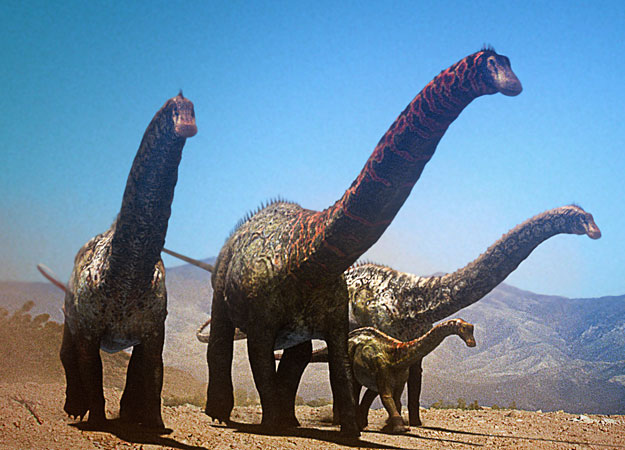 |
| Dinheirosaurus weighed 30 tons and stretched 90 feet in length! |
This dinosaur is one of the largest dinosaurs to appear in Dinotasia.
Dinheirosaurus is a close relative of the North American
Diplodocus and Apatosaurus and is about the same size.
Despite its long neck, Dinheirosaurus mainly grazes on
low-growing foliage rather than browsing on tall trees. Weighing up
to 30 tons, most predators would rather not mess with them. They also
have long whip-like tails that can be used to injure attackers, as
Broken Jaw learned the hard way! In Dinotasia, the individual
that snaps Broken Jaw's lower jaw bone in two continues to have a
predator-prey relationship with Broken Jaw into adulthood. She must
always keep an eye on Broken Jaw, because the young Allosaurus
seems set on making a meal, not on her, but on what appears to be her
offspring.
Ornitholestes
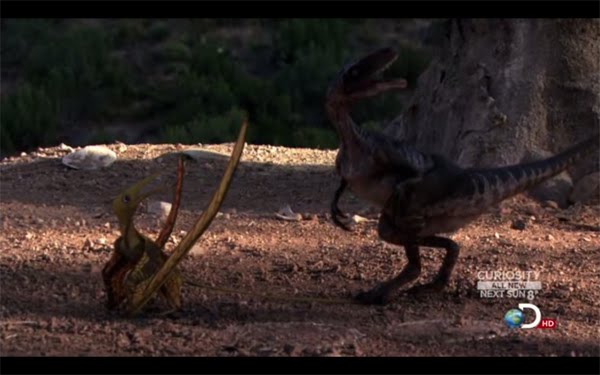 |
| Ornitholestes (right) spends much of his time trying to catch that Rhamphorynchus. |
Ornitholestes,
a small sheep-sized theropod, was probably the Jackal of the
Jurassic. Although no fossils of this dinosaur have been found in
Portugal, many of the dinosaurs found in Portugal are the same
species or very similar related species to ones found in another
location called the Morrison Formation, in North America. For
instance, Allosaurus and
Torvosaurus have been
found in both Portugal and North America; Dinheirosaurus
is quite similar to its relative Diplodocus,
Lusotitan is similar
to the North American Brachiosaurus
and Miragaia is
similar to the more famous Stegosaurus.
In Dinotasia, one
Ornitholestes learns
why it should never awake a sleeping Allosaurus.
Another Ornitholestes
spends much of his time on screen trying (and often humorously
failing) to catch a Rhamphorynchus
in a very similar fashion to the cartoon Tweety and Sylvester. I
found the scenes between Ornitholestes
and Rhamphorynchus
some of the funniest scenes in the whole film.
Rhamphorynchus
 |
| The Rhamphorynchus of Dinotasia has a symbiotic relationship with Broken Jaw. |
Rhamphorynchus
is a small pterosaur from Jurassic Europe. Normally, this species is
a fish-eater, but the individual in Dinotasia
seems to have a taste for insects. It also has formed a symbiotic
relationship with Broken Jaw, similar to the relationship crocodiles
were formally believed to have with African plover birds. Broken Jaw
will open his toothy jaws for the little pterosaur and allow him to
eat the leftover flesh stuck in between his teeth. Like all
pterosaurs, Rhamphorynchus
is not a dinosaur, unlike his pursuer, the carnivorous Ornitholestes.
Miragaia
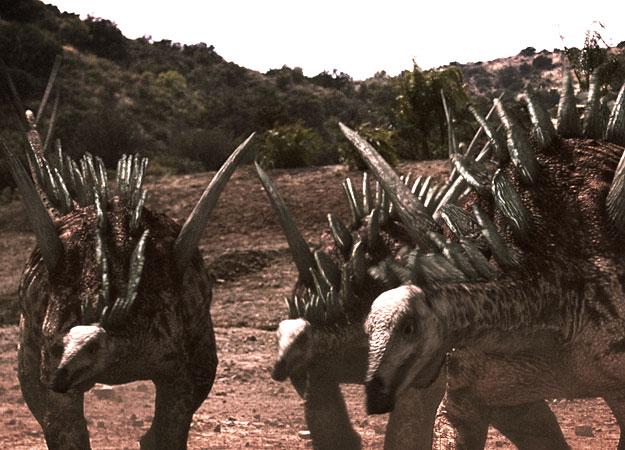 |
| A herd of Miragaia is best left alone, even by large predators! |
Miragaia
is a medium-sized member of the stegosaur family. Like its larger
relative Stegosaurus,
Miragaia has tall
plates on its back. Scientists aren't sure what the plates are used
for, but one theory is that they were used for display purposes. What
makes Miragaia
different from many other stegosaurs is the fact that it has a long
sauropod-like neck, a quite unusual trait for a stegosaur. This
dinosaur also has a spiked tail for protection.
Torvosaurus
 |
| Torvosaurus is the largest carnivore ever to walk European lands. |
For a time, Broken Jaw believes that he's the largest carnivore in
the region . . . that all changes with the arrival of Torvosaurus.
Torvosaurus is a large megalosaurid that stretched 35 feet or
more in length and weighed 4-5 tons. In Dinotasia, he wants
the territory around the waterhole to himself, even if that means
kicking Broken Jaw off of his favorite turf. He is also a major
threat to juvenile Dinheirosaurus.
Lusotitan
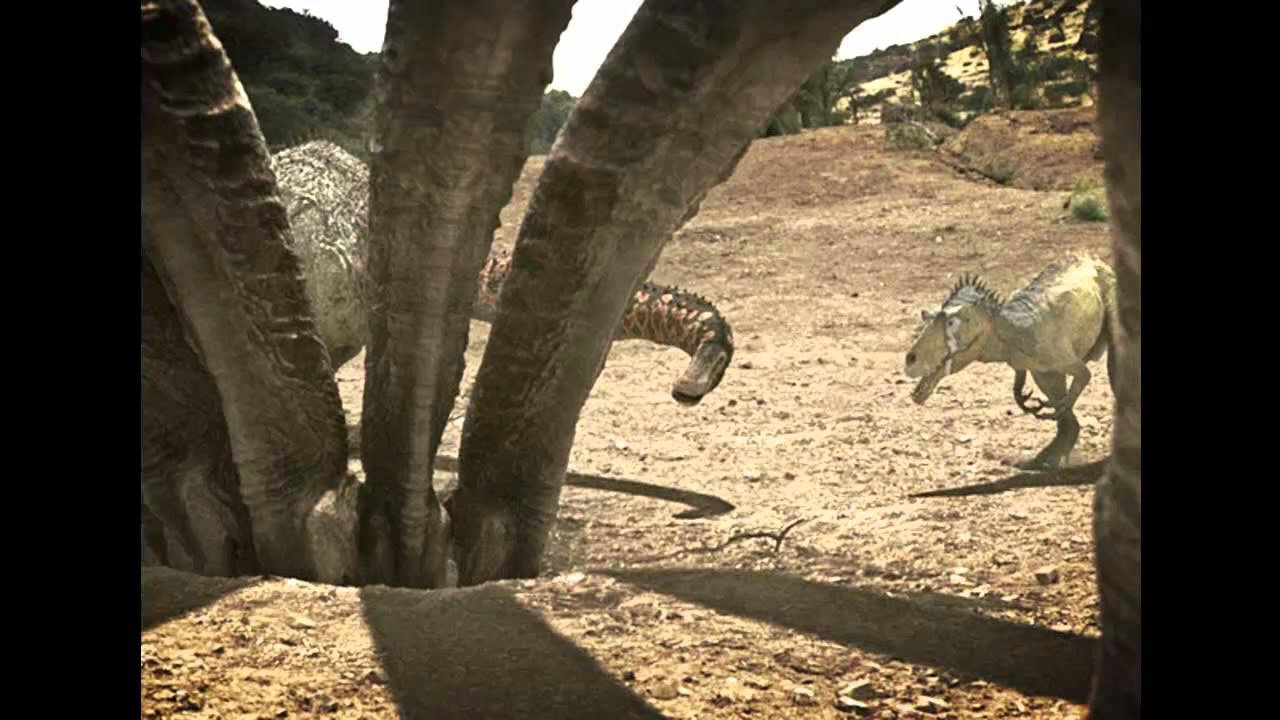 |
| Lusotitan can drink lots of water in one sitting! |
The largest dinosaurs to appear in the series are sauropods called
Lusotitan, with emphasis on “titan”. They stand 60 feet
tall, are 80-90 feet long and weigh 50 tons! At this size, they could
peer into a six-story building with no trouble at all. Lusotitan
are very closely related to Brachiosaurus of North America and
Giraffititan of Africa. Unlike the smaller Dinheirosaurus,
this sauropod uses its long neck to browse on leaves in the treetops.
Sound
of Survival
Rahonavis
 |
| Rahonavis is certainly a bizarre creature! |
Sound
of Survival portrays the little
extinct species of bird, Rahonavis
struggling to stay alive on what is now the island of Madagascar.
Though it looked like a member of the dromaeosaur or raptor family,
Rahonavis' skeletal
design reveals it is actually a bird. Like a raptor, it had a
sickle-shaped enlarged talon on each foot. Paleontologists aren't
sure if this bird could fly or not. Dinotasia
seems to portray it as a creature that can fly at least a little bit.
However, its long legs make it an ample runner, able to escape
dangerous predators. Back then, Madagascar wasn't home to cute and
cuddly lemurs and scaly chameleons. Before the Flood, ravenous
dinosaurs roamed the area. Rahonavis
wasn't very big – at only the size of a raven, it would have made
the perfect meal for many predators.
Majungasaurus
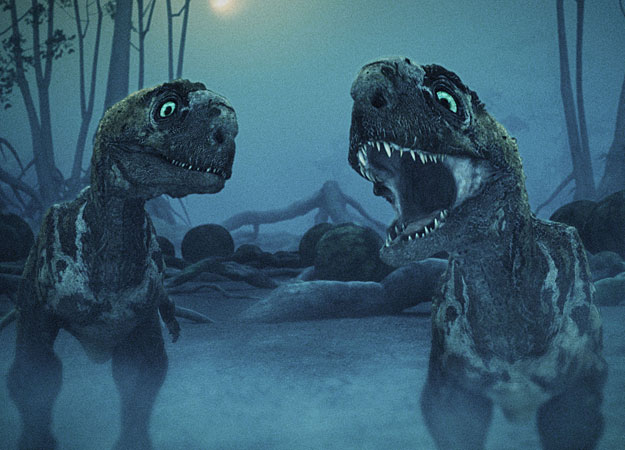 |
| Even baby Majungasaurus are ferocious hunters! |
Madagascar's largest predator in the pre-Flood world was a carnivore
by the name of Majungasaurus.
This species of
dinosaur belonged to the abelisaurid family and was related to
dinosaurs such as Carnotaurus
and Aucusaurus.
It probably hunted creatures like the large sauropods it shared
pre-Flood Madagascar with. In Dinotasia,
even the babies are ferocious predators at a very young age. While
their mother attempts to kill big game, her young try their hunting
skills on a Rahonavis
who must use his roadrunner-like running ability to escape danger if
he wants to survive.
Beelzebufo
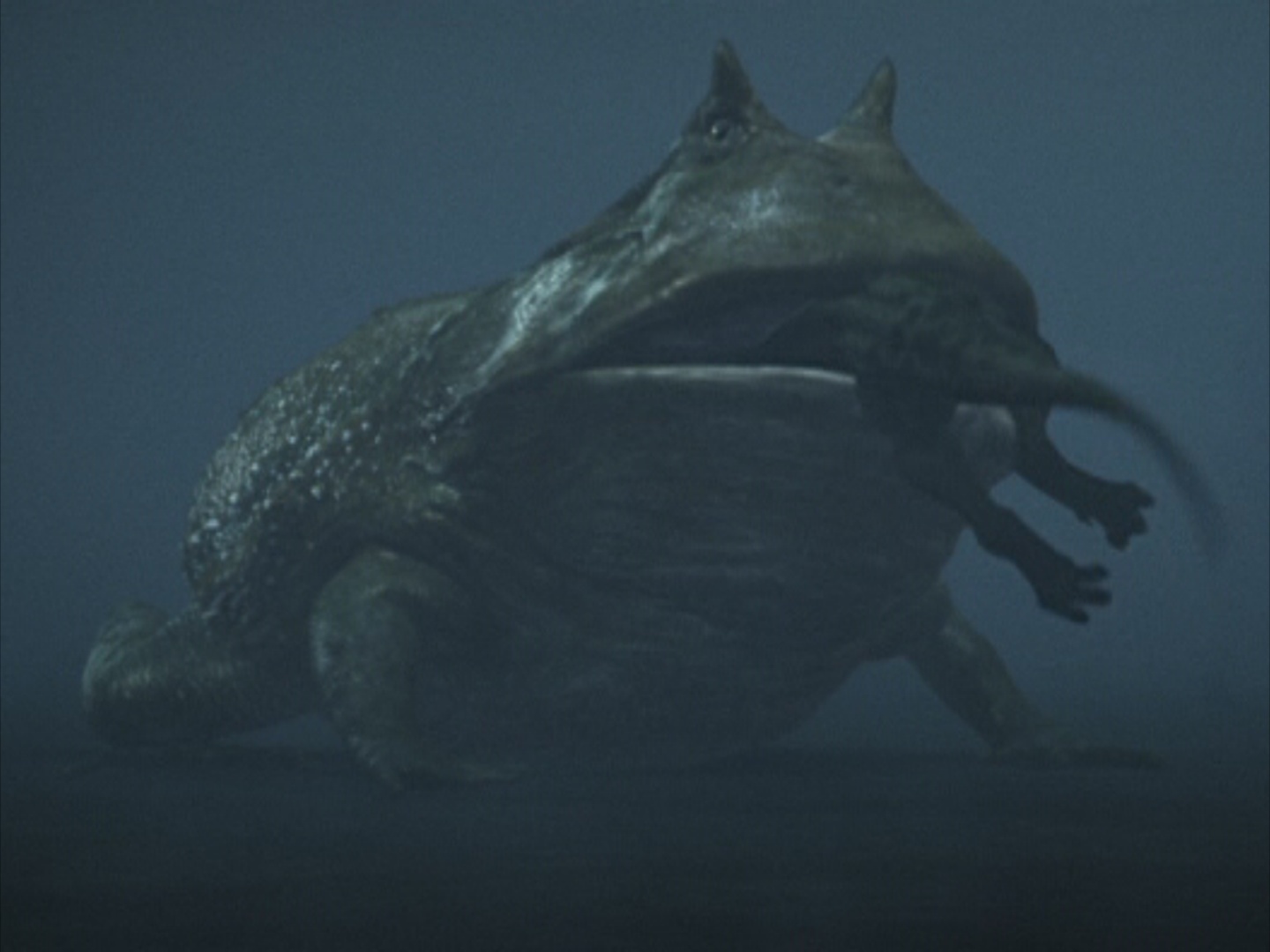 |
| Beelzebufo was large enough to eat baby/small dinosaurs! |
One of the largest frogs ever to exist was Beelzebufo. It was
about the size of the modern African bullfrog. African bullfrogs
aren't very frightful creatures like many frogs are; in fact, they
won't hesitate to bite human beings. If African bullfrogs are like
this, one can only imagine what meeting Beelzebufo would have
been like! This extinct frog was so large that it could consume other
frogs, and even baby/small dinosaurs, including Majungasaurus
babies!
Forbidden
Fruit
Shunosaurus
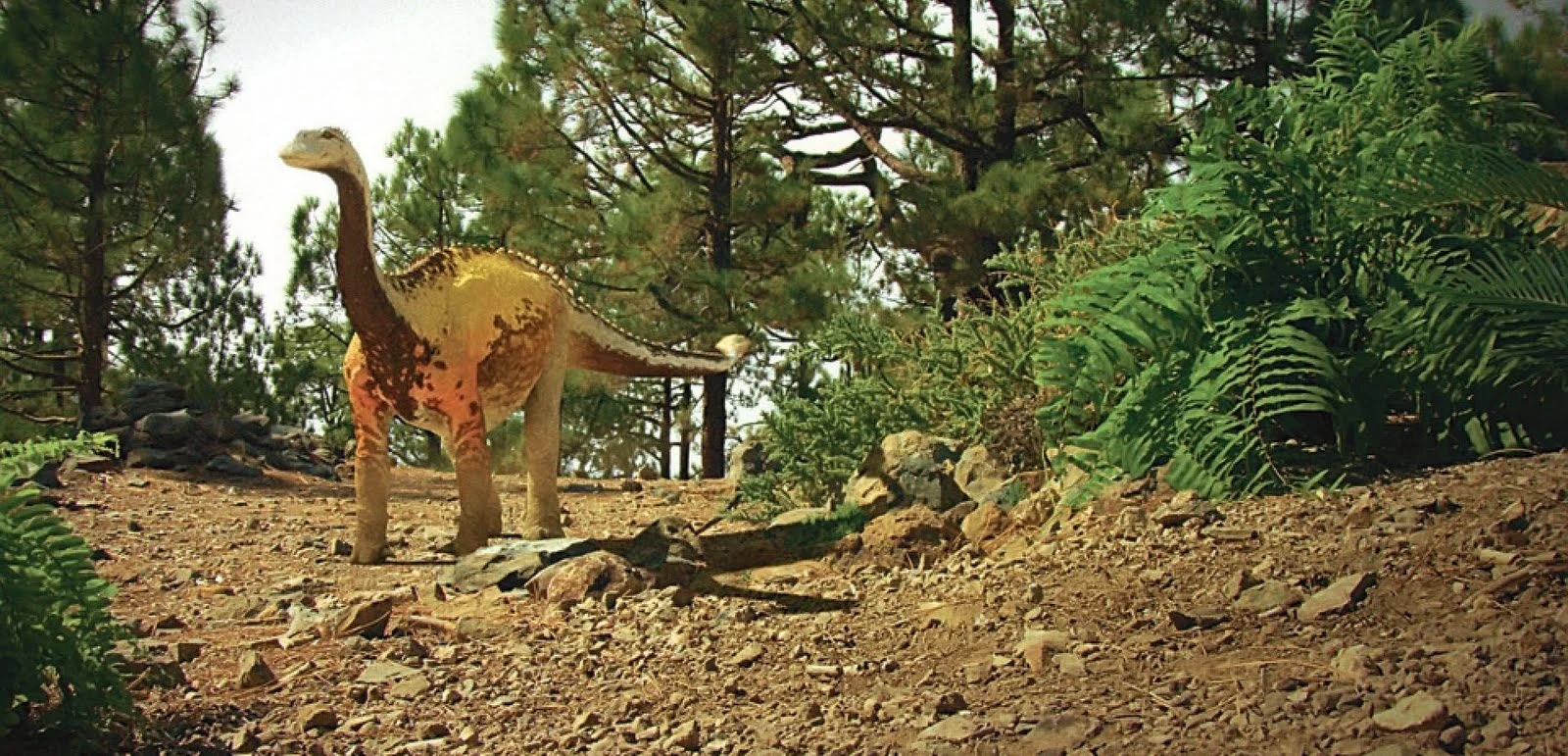 |
| Shunosaurus has a club on its tail for defense. |
Shunosaurus
was a bizarre sauropod; unlike most sauropods, it had a club on the
end of its tail, similar to the ones possessed by ankylosaurs. In
Dinotasia, a juvenile
or sub-adult Shunosaurus
decides to disobeys his elders and sample some red mushrooms.
However, he soon learns that his choice was a poor one when he
becomes disorientated and starts feeling sick. This is a bad time for
this to happen, because no sooner does he come under the effects of
the mushrooms does a pair of Sinraptors
approach, deciding they want their next meal!
Sinraptor
 |
| Sinraptor is a predator you don't ever want to run into! |
The name of carnivorous Sinraptor is deceptive, as its not
sinful (though it did become carnivorous due to man's sin) and it
isn't a raptor. Instead, it's in its own family. A
pair of these dinosaurs attacks the disorientated Shunosaurus
in Dinotasia.
Herd
Instincts
Protoceratops
 |
| In Dinotasia, this baby Protoceratops learns why it is important to stay with other members of his own kind. |
Protoceratops
was a sheep-sized herbivorous relative of the larger Triceratops
– they were both in the ceratopsid family. As portrayed in
Dinotasia, scientists
believe these dinosaurs traveled the plains of what is now Mongolia
and China in herds to protect themselves from predators. Also for
protection, they have a bony frill jutting out of the backs of their
skulls to protect the neck. Unlike Triceratops,
Protoceratops lacked
ferocious-looking horns on its head – it had a parrot-like beak
that would not only have been useful for eating tough plants, but
also snapping the bones of predatory dinosaurs. One dinosaur that
preyed upon Protoceratops
is none other than the infamous Velociraptor!
By the way, we know that Protoceratops
was prey to Velociraptor
not only because we've found tooth marks and teeth of raptors on and
around Protoceratops
bones, but we've also found the skeletons of these two dinosaurs
preserved locked in a deadly battle they were having before being
rapidly buried by the waters of the Genesis Flood. In Dinotasia,
a baby Protoceratops
loses its herd to a pair of Velociraptor
who insist on making him their dessert. Could a mysterious stranger
save him from death?
Velociraptor
 |
| Even at the size of a large turkey, Velociraptor was one of the most deadliest predators ever to walk the earth! |
Made famous by its portrayal in Jurassic Park, Velociraptor
has a rightly deserved reputation in terms of its ferocity! The real
Velociraptor wasn't as large as the man-sized one in the movie
– it was only about the size of a large farm turkey. But anyone who
was fooled by the raptor's small size paid a deadly price! Pound for
pound, Velociraptor was one of the most deadly of dinosaurs.
Scientists believe that it might have hunted in packs or pairs to
bring down prey larger than itself. As if this weren't bad enough, it
also had an enlarged retractable claw shaped like a sickle on each
foot used to finish bring down its prey. In Dinotasia, this
wily predators are responsible for the death a young Protoceratops'
family and are soon after him too. A lone bull Protoceratops
soon shows up . . . has another dinner option arrived or have the
Velociraptors met their match?
The
Empty Nest
Anhangeura
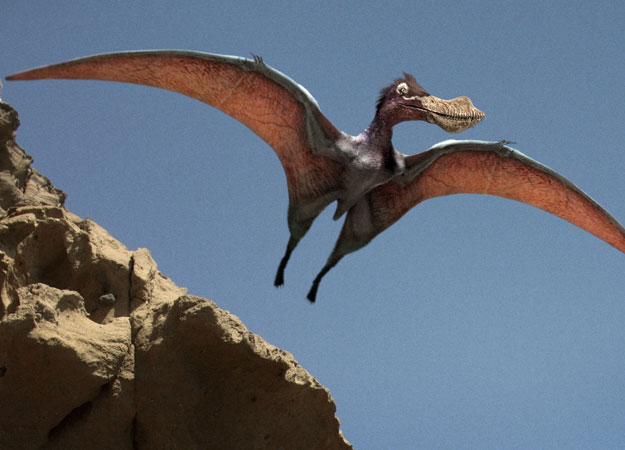 |
| Anhangeura was a pterosaur, and not a dinosaur. |
At the beginning of this sequence, a mother Anhangeura arrives
at her nest of offspring with a freshly caught fish in her jaws. The
babies squeal excitedly, waiting for their mother to feed them . . .
before gulping it down herself! Anhangeura was, like
Rhamphorynchus, a species of pterosaur, but with a 15-foot
wingspan it was much larger. Fossil eggs of pterosaurs have been
found and reveal that the babies were born with fully-functional
wings, suggesting that they didn't remain in the nest for a long
period of time. In Dinotasia, the mother Anhangeura has
the same idea and decides that it's time for her young to learn to
fly! One young Anhangeura isn't so sure he can accomplish this
feat. Unfortunately, there are plenty of dangers around the nesting
area that make it risky for a young flier. Anhangeura had a
bizarre crest on its beak that was probably used for display. This
pterosaur's remains have been found in Argentina.
End
Game
Tyrannosaurus
 |
| Tyrannosaurus rex, like Jack Palance as pictured above, were 40 feet long, 20 feet tall, weighed 7 tons and were made of pure terror! |
Tyrannosaurus
rex is the most famous dinosaur
of all time! It was the largest member of the tyrannosaur family,
measuring 43 feet long and weighing 6-7 tons; it plays a huge part in
Dinotasia, which
centers around the lives of a pair of Tyrannosaurs,
named Tinkerbell and Stumpy. Early in this section of the film,
Stumpy battles with another, larger tyrannosaur named Jack, who's
mere appearance is enough to give most dinosaurs a run for their
money! During the battle, Jack successfully rips one of Stumpy's arms
off with his powerful jaws (hence the name “Stumpy”). Yes, we
have evidence for this gruesome behavior as well: a fossil “shoulder”
bone from a T. rex reveals that its arm was completely ripped off by
another predator, and there was only one dinosaur that lived in T.
rex's locale that could do damage like that – another T. rex!
Despite their violent nature, many scientists believe that
Tyrannosaurus, as
portrayed in Dinotasia,
cared for their young before and after hatching. Tinkerbell and
Stumpy appear to be wonderful parents and even go as far as to help
their young escape their eggshells. Unfortunately, the pair learn
that their Cretaceous Montanan home is a hard place to raise a
family, especially with egg-eaters about and the threat of Jack. Life
for a dinosaur can be hard, especially for the King of the Tyrant
Lizards.
 |
| Even the mighty T. rex can be good parents. |
Triceratops
 |
| Triceratops is the largest member of the ceratopsid family. |
Triceratops
– a 30-foot long, 6-12 ton behemoth – was a favorite meal for T.
rex. We know this because bite marks have been found on Triceratops
bones; also, many bite marks made on Triceratops
bones from T. rex were made when the Triceratops
was alive because the bone healed before the herbivore died.
Triceratops was the
largest member of the ceratopsian family and had a beak strong enough
to chomp through tree branches as thick as a man's arm! For
protection, Triceratops
boasted a neck frill and three sharp horns on its head. Because of
this dinosaur's defenses, Stumpy and Tinkerbell will work together to
bring it down.
Ankylosaurus
 |
| Ankylosaurus is built like a tank! |
One of the most heavily armored dinosaurs ever to exist was the
Ankylosaurus. It was covered in bony knobs and spikes from its
neck to the tip of its tail. At the size of a school bus, it was
built like a tank. An added bonus possessed by Ankylosaurus
was the large bony club on the end of its tail used to protect itself
from danger. It weighed as much as four to six tons and is a creature
best left alone, a lesson Junior, one of Stumpy and Tinkerbell's
offspring learns the hard way.
Troodon
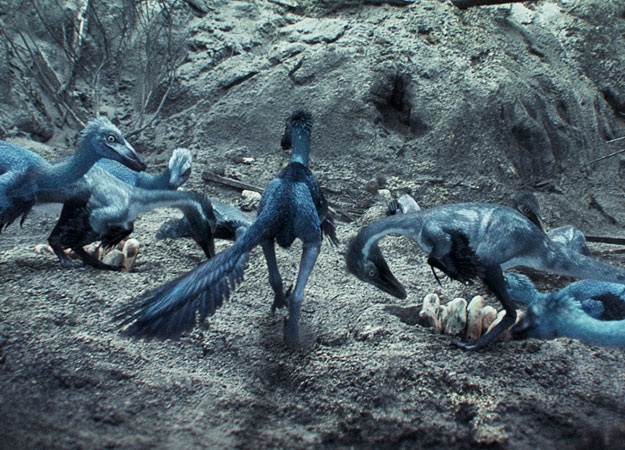 |
| Troodon might have nested in colonies. |
The final creature I'm going
to talk about in this review is the wily Troodon,
the fox of the Cretaceous. It was a sheep-sized omnivorous theropod
similar in design to Velociraptor.
Unlike raptors, Troodon
probably wasn't too keen on hunting big game very often and mainly
stuck to smaller prey, such as smaller reptiles, amphibians, eggs and
baby/smaller dinosaurs. A major similarity they have to raptors is
the enlarged sickle-shaped claw on their feet. In Dinotasia,
this small dinosaur lives in pairs and likely mates for life. They
are also very protective of their nests and eggs; this is based on
fossil evidence. We've found close relations to Troodon
sitting on top of their nests – they were brooding their eggs and
refused to leave them unprotected, just as any good parent will do
even as the waters of the Genesis Flood covered them. This sort of
reminds me of the Bible verse (Under God's protective wings) . . .
Dinotasia portrays a
pair of Troodon
struggling to cling to survival after an asteroid strikes the earth,
(according to Dinosaur Revolution,
as this isn't said in Dinotasia)
setting off global wildfires and afterward an impact winter, similar
to a nuclear winter; they are portrayed as some of the last dinosaurs
on earth.
Creationists
know that dinosaurs were not sent to extinction by an asteroid from
space like evolutionists belief; there is actually much evidence
against that theory.
However, the events portrayed in the film's climax and the first
scene featuring Inostrancevia
aren't as untruthful as they might seem to a Bible-believing
Christian at first glance. (Don't worry, I'm not about to get
Theistic evolution-ish here! Just bear with me!) Geological evidence
suggests that our planet once went through a time of major
catastrophes and asteroid collisions. This has led many creationists
to believe that they happened during
the Genesis Flood! In fact, an asteroid collision might have even
started the Flood. How? Well, that's beyond the scope of this
article, but here's a link where you can learn about how God might have used asteroids and/or comets to start Noah's Flood.
Evolutionists
believe that a six-mile wide asteroid struck the Gulf of Mexico 65
million years ago and it wiped out the dinosaurs. Well, we know it
didn't happen 65 million years ago, but that asteroid collision did
happen. How do we know? We have the crater to prove it! Asteroid
impacts such as these (and the lava fields showed in the
Inostrancevia sequence) both happened during Noah's Flood.
So what about the end of Dinotasia
that portrays the Troodon
struggling for survival? How close to the truth is that? After a
Flood of the magnitude described in the book of Genesis, the world
wouldn't have been pretty as is often depicted in portraits. It
probably would have been pretty barren. The volcanic activity during
(and after) the Flood would have expelled a lot of volcanic debris
into the air, blocking out lots of the sun's heat. The world Noah
stepped into after his voyage on the Ark would have probably looked
somewhat similar to an impact winter, causing much snow in some
regions of the world, as is portrayed in Dinotasia.
(You can find more information on the post-Flood world here).
So
there you have it: my summary of Dinotasia.
While watching it, all the violence and predatory behaviors in the
film really reminded me of the world we live in that has been marred
by sin – our sin! But God never intended us to stay in this state
forever. He sent His Son Jesus Christ to live the life of a mortal
before paying the penalty for your – and my – sin: death.
However, He rose again three days later. He did this so that one day,
Christians can live in a perfect world without sin and death. (If you
are interested in becoming a Christian, please visit this page).
Aside
from my objections to the film mentioned above, I really loved it and
felt almost as if I'd been transported back in time (at least, what
we believe the world would have looked like back then). I hope you
enjoyed this look into what our world might have been like after the
Fall in the pre-Flood world: the world of Dinotasia.
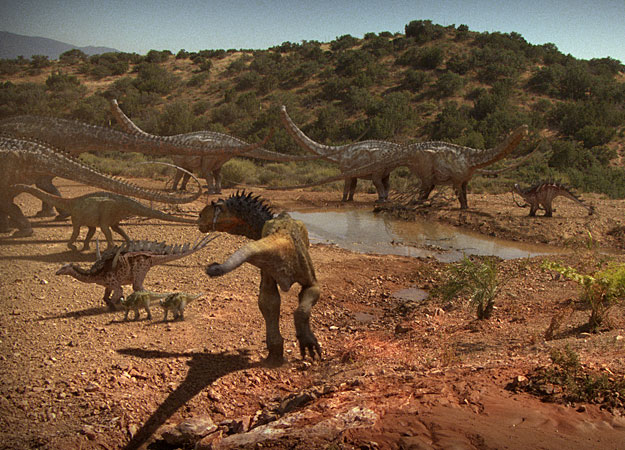 |
| Welcome to the world of Dinotasia! |
PS 1: To post a comment
(this is highly encouraged), please simply click the post you wish to
comment on, scroll to the bottom of the page and put what you wish to
say or ask in the comment box. Then in the box below the comment box
choose who you’re going to comment as. And then click preview
or publish. If you aren’t signed into Google, you’ll be
asked to type in a word and a number in the space provided. Type the
word, put a space and then put the number. Then your comment is on
the blog!
PS 2: Have a puzzling question about
animals (including dinosaurs), myself, my latest book, my stop-motion
movies, Creation or etc? Please post your question as a comment or
send me an email at animaladventures@aol.com.
PS 3: What’s the new in the news?
Check it out at SMILEY’S
NEWS.











